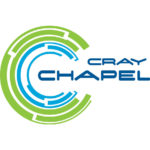Brad Chamberlain from Cray gave this talk at the HPCKP’19 conference. “Though Chapel has been under development for some time now, its performance and feature set have only recently reached the point where it can seriously be considered by users with HPC-scale scientific, data analytic, and artificial intelligence workloads. In this talk, I will introduce Chapel for those who are new to the language, and cover recent advances, milestones, and performance results for those who are already familiar with it.”
Video: Chapel – Productive, Multiresolution Parallel Programming
“Engineers at Cray noted that the HPC community was hungry for alternative parallel programming languages and developed Chapel as part of our response. The reaction from HPC users so far has been very encouraging—most would be excited to have the opportunity to use Chapel once it becomes production-grade.”
Video: Chapel – Productive, Multiresolution Parallel Programming
Brad Chamberlain from Cray presented this talk at the recent Argonne Training Program on Extreme-Scale Computing. “We believe Chapel can greatly improve productivity for current and emerging HPC architectures and meet emerging mainstream needs for parallelism and locality.”
Why Create a New Programming Language with Chapel?
“Scalable parallel programmers (and desktop parallel programmers, for that matter) would benefit greatly from a productive new language supporting better syntax, features and optimizations than today’s parallel notations offer. HPC has a rich set of lower-level technologies upon which to build and numerous failed parallel languages from which to learn.”







